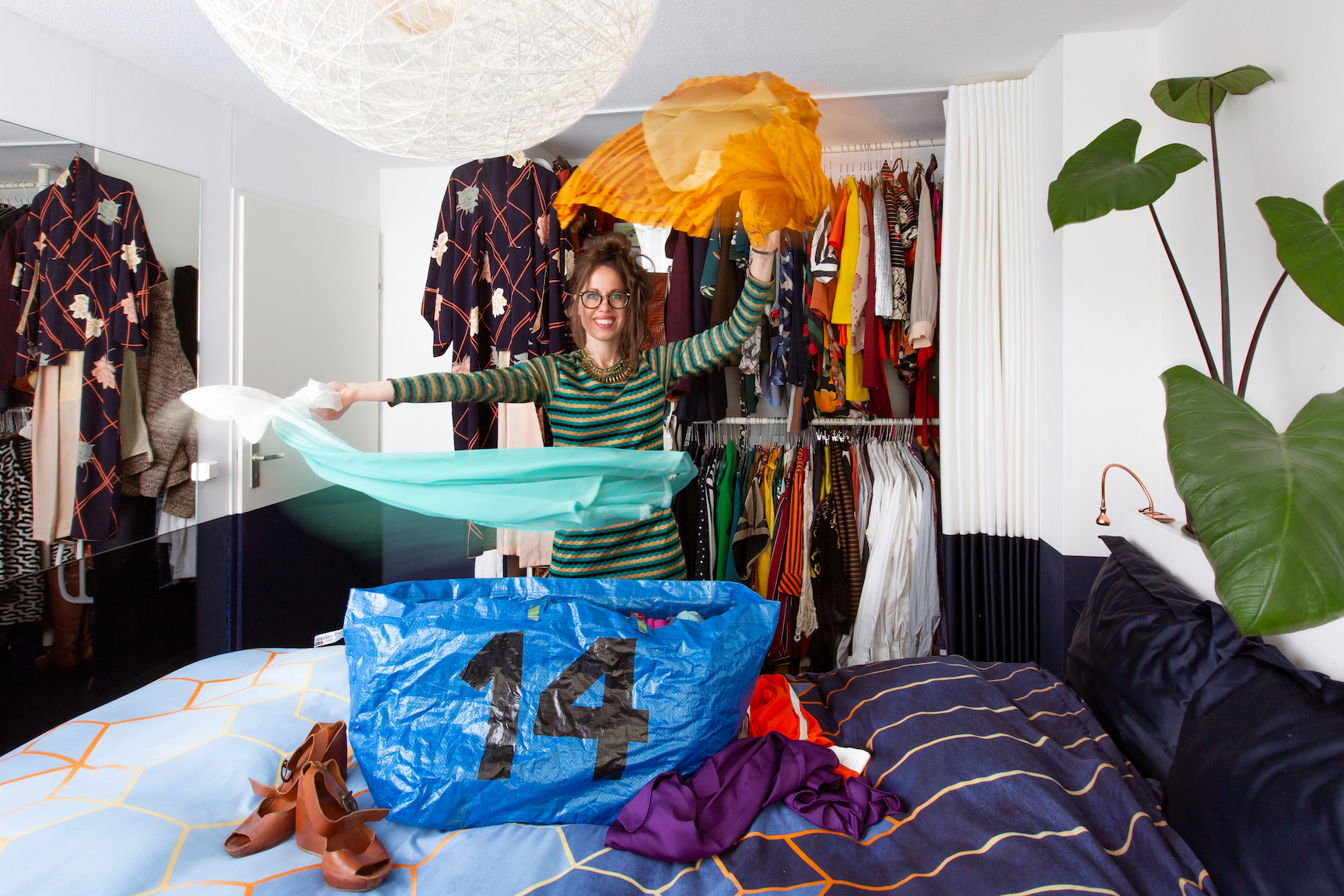We caught up with Nichon Glerum, founder of The Clothing Loop, to hear about the fashion sharing initiative that took the Netherlands by storm.
How it works: Bags of pre-loved clothing are continuously passed around neighbourhood networks called ‘loops’. Each member can take out as many items as they like, adding any clothes they no longer wear, before delivering it to the next address.
This interview has been edited for length and clarity.
What’s your background?
“I studied fashion as a bachelor, but after graduating and working in the field, I knew that that wasn’t really the right direction for me. I was good at it, but I didn’t like the industry. I eventually ended up as a photographer and I’ve been working as a freelance photographer for 12 years now.”
Where did the idea of clothing swaps come from?
“Before the pandemic I was living the nomad life and working projects here and there. I was always living out of a backpack, so I’d already learned to live with a lot less and also to be really frugal. So secondhand clothing for me just started off as a way to save money. Throughout the years it became more of a mission.
I really like clothes swaps – I always have. I think it’s so nice to get together with a group, and you don’t even need to know each other. There’s this sisterhood vibe. I’ve been doing that just for fun for the past seven, eight years, on a small scale just in my living room with friends and neighbours, but also on a larger scale here in Amsterdam together with some venues where we organised public swaps with 500-700 people. That was my pastime.”
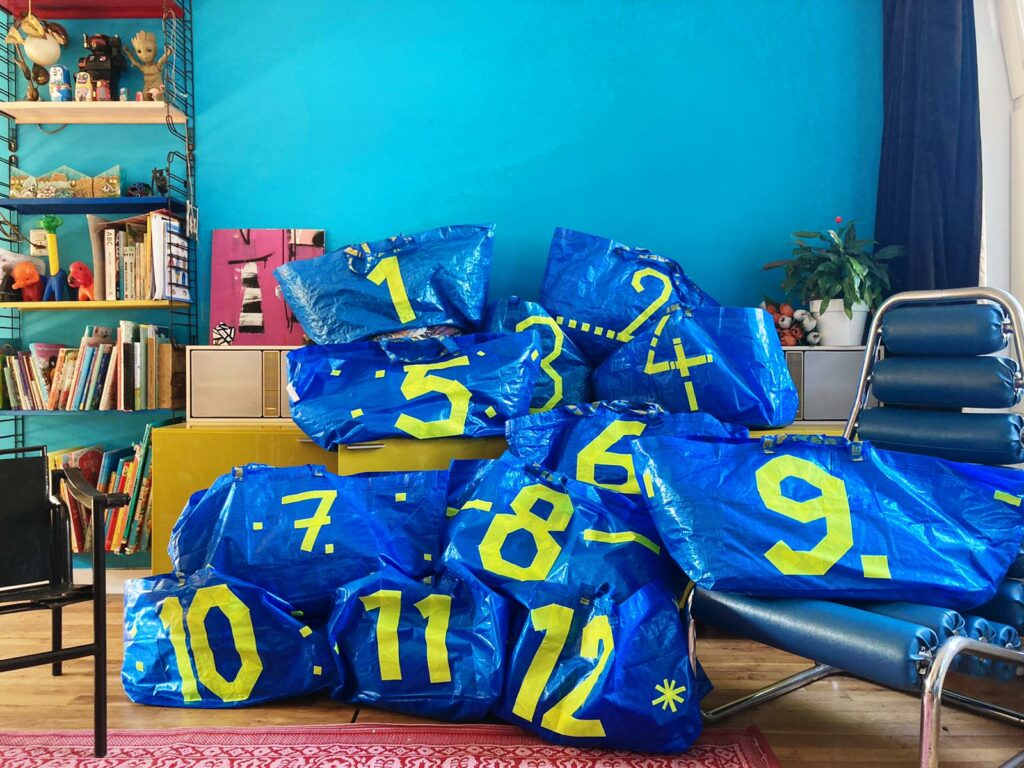
How did The Clothing Loop start?
“During the coronavirus outbreak, in the first week of lockdown, someone sent a message. She said, ‘I just cleaned out my closet and I have this bag and now it’s standing in the way. Does anyone want to go through it and see if there’s something that they like?’ Not one but six people responded. And so they decided to let the bag travel and then people could also add something. Then other people said they would like to be in the loop and so more and more people joined.”
How did the organisation grow?
“So we’d been fine-tuning it, figuring out how many bags per group of people is ideal – sorting all those things out as we went. Then during the second lockdown, I thought: this takes very little production time, it’s a lot of fun and it can benefit a lot of people. So I bought a URL, set up a Google Form and put every active loop on the website, so people could see if there’s one in their neighbourhood.
The first time I shared this, during that second lockdown, no one really picked up on it. It was just a blog and one newspaper. But just through our own network, we grew into nine cities, and then pretty soon it was 27. We sent out a new press release and all of a sudden the whole thing started to snowball and we made the national news, big outlets, magazines – it was everywhere. So we grew exponentially. I think when we got the major press coverage we had 2,000 people spread out in 70 different loops in the Netherlands. And then overnight, we doubled. So that was hard – we weren’t ready for that! But you know, we started to professionalise and fine-tuned it even more.
In the Netherlands at the moment, we have 450 loops with around 16,000 people in them.”
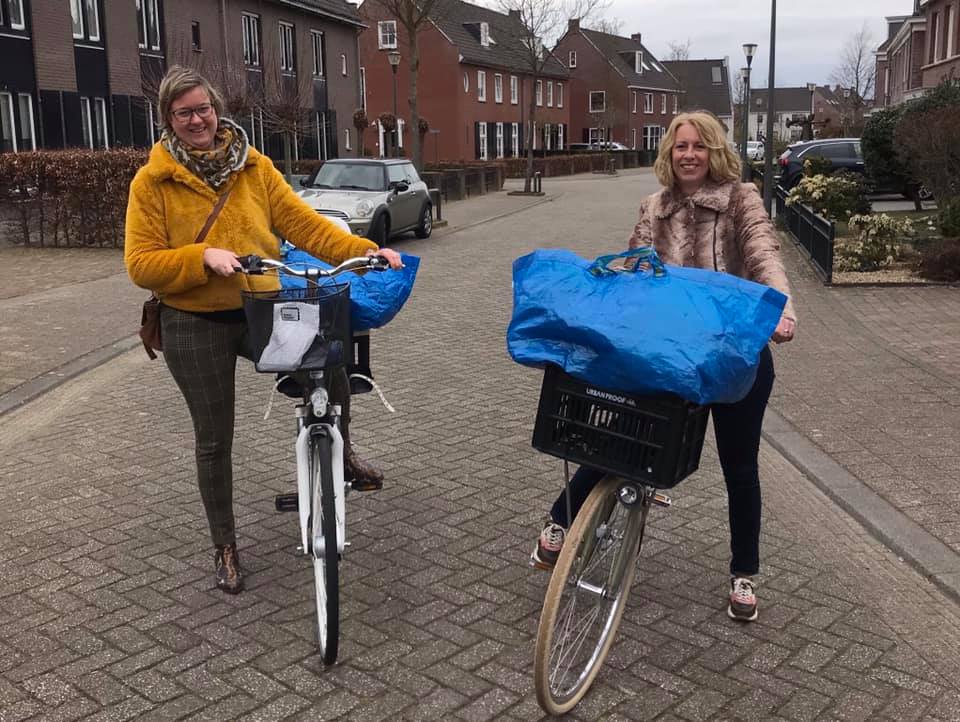
How has the system evolved since lockdowns ended?
“The nice thing is now that we’re hopefully – let’s hope and pray – really past the whole lockdown situation, it’s good to see that it definitely has a place in everyday life.
I really like how The Clothing Loop benefits the live swapping events. A live swap is like a festival, it’s like a party. I’ve noticed that through hosting The Clothing Loop in all these municipalities, there are way more people interested in the live swap events as well.
After a live swap we usually have leftovers. You can get rid of the not-so-nice things, but keep the gems that were just not taken that particular day. Then, through The Clothing Loop, they have a place to go for a third or fourth or fifth chance of being worn. So I find that these systems, surprisingly, are not competing. They really benefit from one another.”
How do you monitor quality?
“If you put something in there because you don’t like it anymore, because it doesn’t fit the woman that you are today anymore, that’s fine. If you put it in there because it looks worn out or it’s completely faded, then no one else is going to want to wear it. So that’s a rule – it should still be in good condition. In general, loose seams and hems and everything should be fixed before people put them in there. We try to self-regulate – when people get a bag and they see something with a stain or something that really can’t be repaired, they can take it out and throw it into a textile recycling bin.”
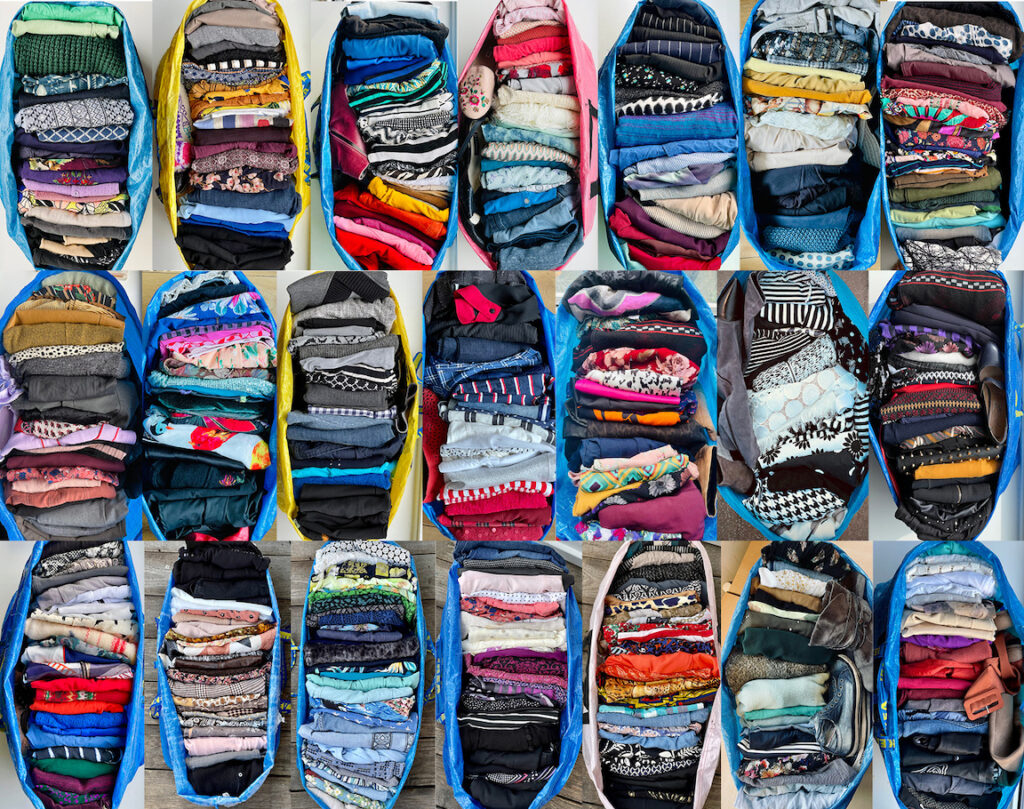
How much clothing is in the system right now?
“We have 16,000 participants. I recommend one bag per six addresses, but let’s say 10 as a conservative estimate. So that means there are 1,600 bags in circulation at the moment. And a bag is between five and 10 kilos. So that’s between 8,000 and 16,000 kilos of clothing in circulation.
We made an estimate that between 5% and 7% goes to the recycling bins. Every 20 addresses, the bag is completely renewed – everything is taken out. If everyone passes the bag within three days, that’s 60 days – so every two months, everything has found a new place, whether it be a new home or the recycling bin.”
What do people like most about it?
“It’s really a social project. The more you share, the nicer it gets. Not everyone feels comfortable sharing selfies or mirror pictures. But it’s really nice to see where your items end up. It feels less anonymous than donating to charity.
People can ask for things to borrow from a group of like-minded people, too. There are between 20 and 130 people in these groups, so even in the smaller ones, the chances are pretty good that you will be able to borrow something that you would have otherwise had to buy.”
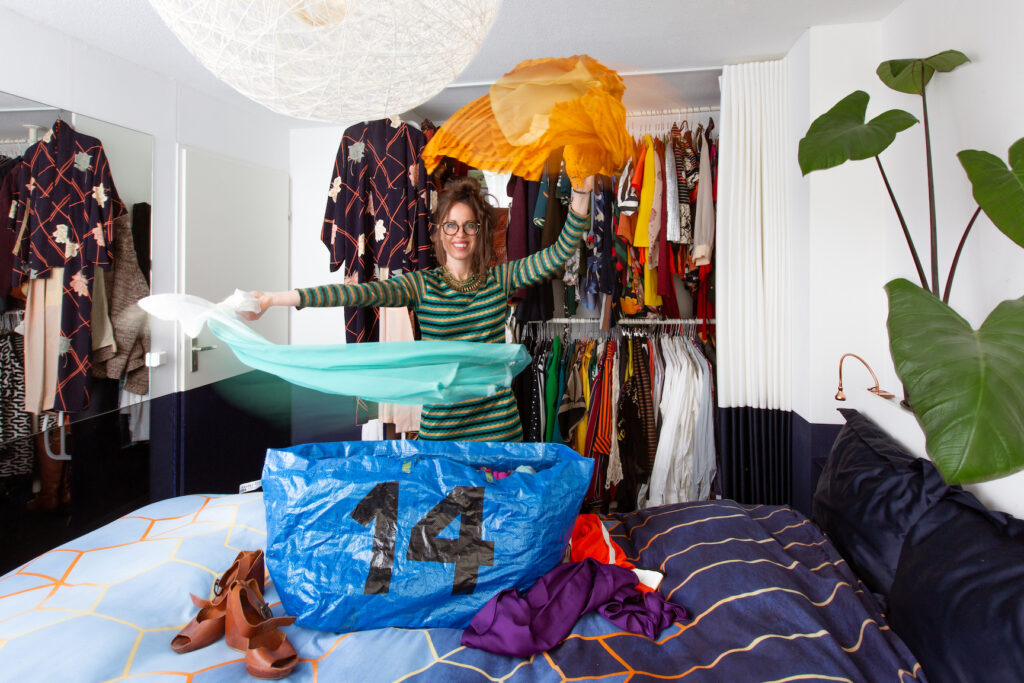
What are the benefits?
“It has direct benefits – you save clothes from landfill – but indirectly, you change people’s mindsets.
Because you have these bags at home and you can take as much as you want, you can try things that you might never have tried in a shop. In the long term, people get to know their style better and they realise what it is that makes them dislike the things that they bought and put it in the bag. And that prevents people from making the same buying mistakes again. So this is a secondary effect of what we’re doing, but it’s fantastic. I think it works on so many levels. We’re really make an impact.”
The Clothing Loop has direct benefits – you save clothes from landfill – but indirectly, you change people’s mindsets.
Nichon Glerum
How you do measure that impact?
“I’m fine tuning our impact report now. We did a huge survey and got 1,500 responses to questions like ‘Did joining this project change your consumer behaviour?’ and ‘How many people did you get to know on average?’ and things like that. The outcomes were pretty good, even better than we expected. People said: I think twice now before I buy something and when I buy something, I make sure that it lasts so when I’m done with it, it can go to the next person. And that just makes me incredibly happy. This whole project is so much work! [laughs]. There’s hardly any funding. But the fact that I can sort of multiply my impact by 16,000, you know, makes it worth the time and effort.”
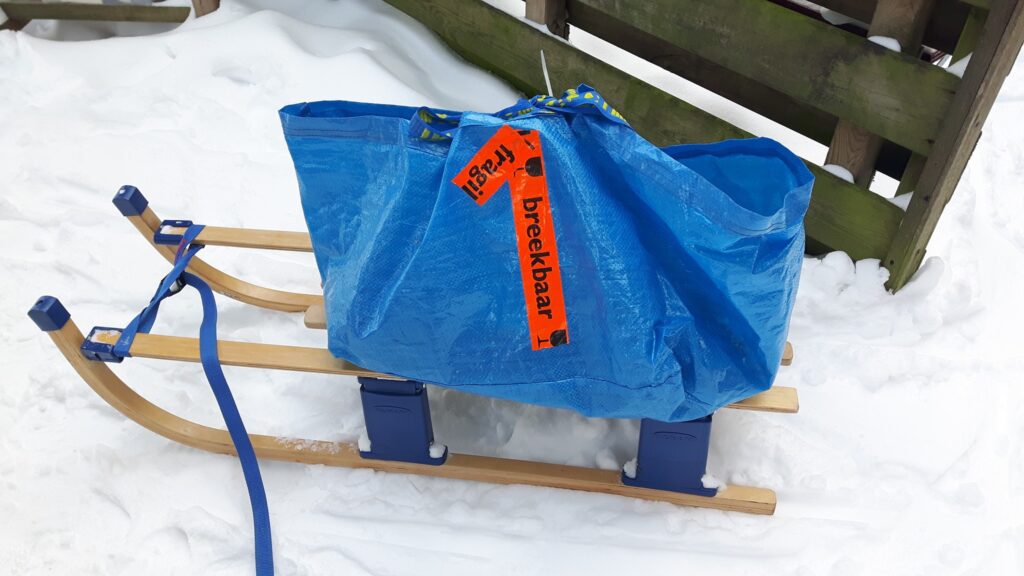
What’s been the biggest challenge so far?
“Firstly, it was time management – we had the Google form, but there was also a lot of manual work because of privacy. We manually gave details to all the local loop owners, which is possible if you have nine or 27 loops, but not if you have 450. It turned into a full-time job next to my actual work and two small kids.
So that’s when we started building the new website, which takes us out of the equation. It’s something I’ve never done before. It still has some kinks, but we’re working on that.”
Where does the money come from?
“We’ve had some government funding, some state funding, but not a lot. We won the What Design Can Do ‘No Waste Challenge‘ together with 15 other projects and that was amazing. We had pretty much an entire year full of master classes, boot camps and one-on-one guidance sessions with different people from the industry, and we received some money as well. So that really helped with looking at the project from a lot of different angles.
We have set up a donation system. We are an independent project, but we partnered with the Slow Fashion Movement for the foundation as our missions are the same – they’ve helped us a lot. I was against accepting donations at first, because I didn’t want anyone to spend anything. In the end that wasn’t possible, but we will never require a contribution because I want to keep the threshold for joining as low as possible.”
So, what’s next?
“We want to reach one million swappers in the next five years.
This whole project has just been trial and error. We never really have a strategy. We always just sort of follow the lead of the project to see where’s it going. Now the obvious logical next step is to go abroad and tell other people about the system. I just saw yesterday that we have one starting in Berlin. There are some Dutch people living in Singapore and they started one and there are also loops in London, Belgium, and a few Switzerland. It’s definitely spreading.”
Lessons for other founders?
“Don’t be scared to ask for help. There were times when this project felt like it was just eating me alive and I felt like I created a monster! You can really be your own worst enemy – just never stopping. So know when to stop, know when to take a break. Never lose the enthusiasm that made you start doing what you do. Because if it’s just eating you alive and there’s nothing left – without the enthusiasm, how are you going to get people to join you?”
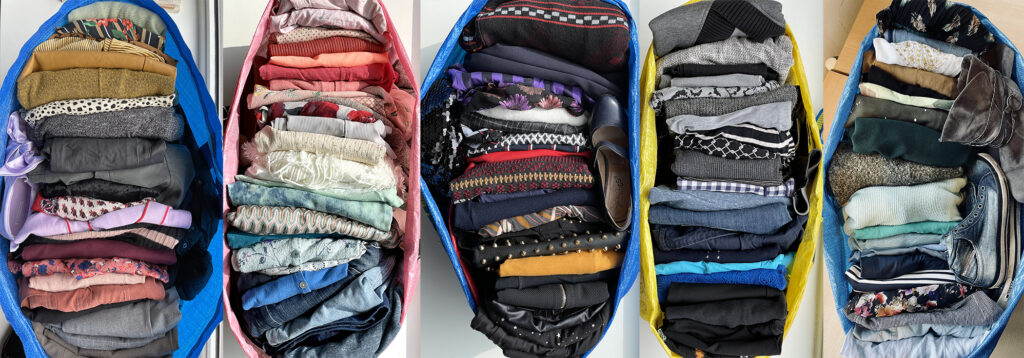
And, finally, tips for SOP readers?
“Well, I have not bought any new clothing for 13 years. So it is possible and it’s also a lot of fun.
There’s this variation on Maslow’s pyramid. At the bottom it’s use what you have. Then borrow, then swap, then buy secondhand. At the top, it’s buy new.
The most sustainable thing you could do is wear the things you own. And borrowing is the same. Don’t be afraid to ask. I’m so happy to lend – I’ve got tonnes of evening dresses. My backpack days are gone! But I use them for photoshoots. Lots of people ask me for help for special occasions and it just makes me so happy because how am I going to wear all of these dresses?
Try to find the joy in swapping. For some people, you may have to get over yourself at first – it feels weird, it’s other people’s clothes, but it’s so much fun, whether it’s live swapping or swapping through The Clothing Loop, I really would urge everyone to give it a try at least once or twice.
Buy new if there’s absolutely no other way. And then if you do buy something new, just make sure that you buy something that will stay with you for a long time and that the quality is also sufficient enough for it to have a life when you’re done with it.
I’m not saying ‘I’m not buying any new clothes and no one should’ – we don’t need a small group of people that does it perfectly all the time. We need a large group of people that does well half the time. It’s better in Dutch, but you know what I mean? We need large groups of people to become a little more sustainable. That’s so much better than a small group of completely sustainable people.”
Details:
The Clothing Loop
clothingloop.org
@theclothingloop

